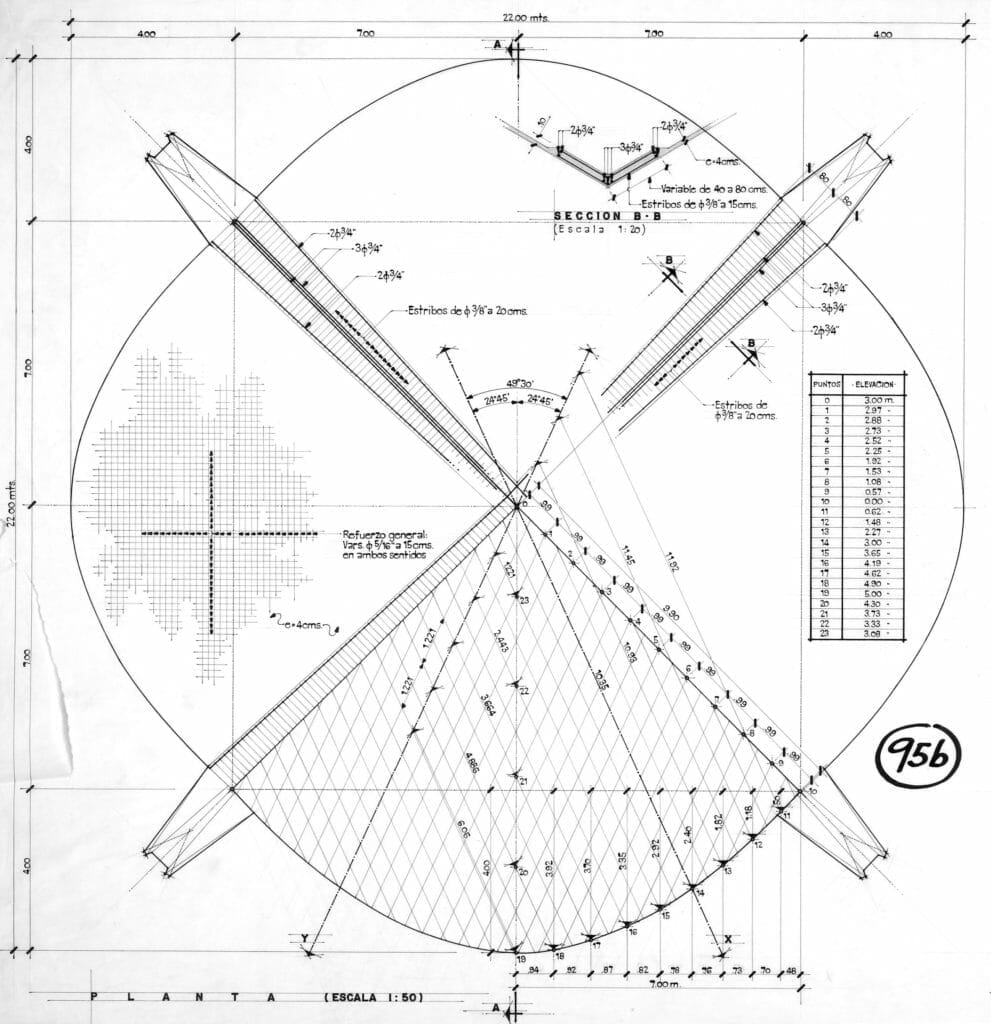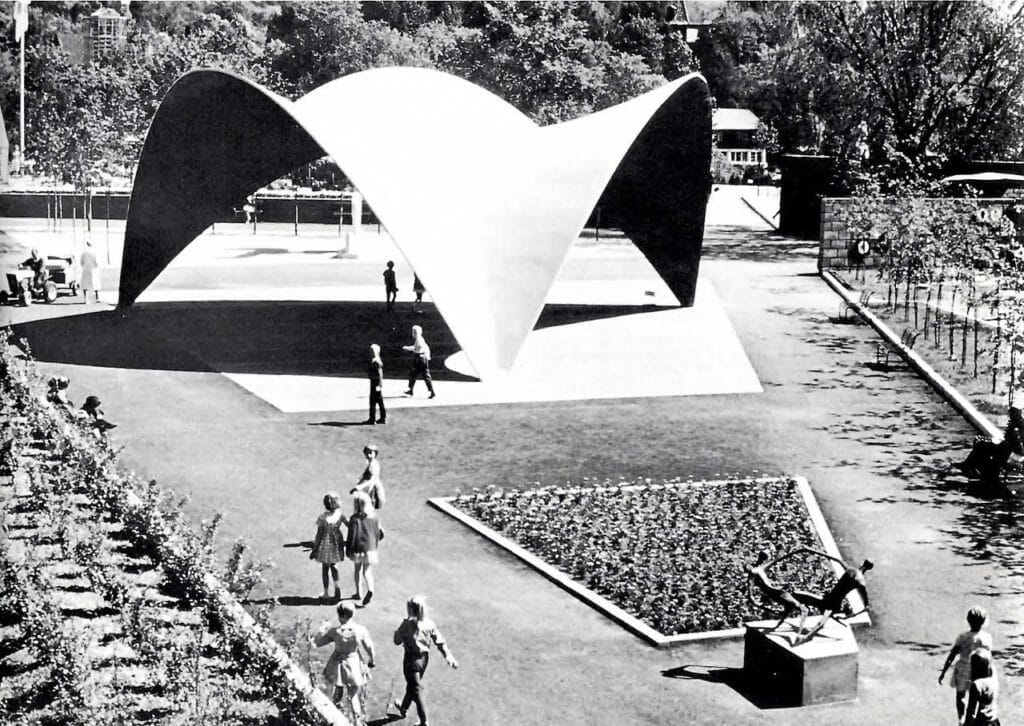Gallery 400 will feature an exhibit highlighting Félix Candela through the museums' exhibit, "Félix Candela's Concrete Shells: An Engineered Architecture for México and Chicago". Félix Candela's Concrete Shells: An Engineered Architecture for México and Chicago roots Félix Candela (1910-1997) as one of the most prolific architects of the 20th century in his designs with advanced geometries and lasting influence in contemporary architecture. The exhibition sheds light on his visionary work through photographs, architectural models, plans, and videos, as well as his time as a professor at the School of Architecture, University of Illinois at Chicago (UIC) from 1971-1978.
Born in Spain and exiled to México at the end of the Spanish Civil War in 1939, Candela spent thirty years in México, where he established his career as an architect. In the 1950s, Candela debuted his experimental signature shell structures designed with a continuous curved surface of minimal thickness. His designs evolved as feats of architectural engineering, using hyperbolic paraboloid geometry. Through architectural models, plans, and photographs of construction sites, Félix Candela's Concrete Shells tracks the evolution of his designs and emphasises their ingenuity.
Candela's curved and cantilevered forms brought new textural and atmospheric qualities to the social and communal spaces they shelter. Candela saw aesthetic implications as inseparable from engineering concerns. He argued that in architecture, “Form cannot be arbitrary; rather, it must satisfy an innumerable series of requirements… the two that I consider most important in the elaboration of architectural form [are]: the aesthetic factor and the structural factor.” Working not only as an architect, but also as a builder and a contractor, Candela recognized the great importance of structural efficiency, and his experiments pushed architecture’s formal and material limits. The exhibition documents fourteen of his gravity-defying concrete shells, including the Pavilion of Cosmic Rays at UNAM in Mexico City (1951); the Chapel Lomas in the outskirts of Cuernavaca (1958); Los Manantiales Restaurant in Xochimilco, Mexico City (1958); and the Palace of Sports for the Olympic Games in Mexico City (1968).
In addition to his structures in México, Félix Candela's Concrete Shells, examines Candela’s time in Chicago as a professor of architecture at UIC through archival material, oral histories, and student projects, which are brought together in an effort to illuminate a period in his life that is relatively unknown. Yet Candela’s influence preceded his relocation to the city. In fact, UIC exhibited his work at Navy Pier in 1958 and 1961—more than a decade before his arrival. His appointment as professor at UIC in 1971 was an acknowledgement of his influence on the discourse. Buckminster Fuller, for example, allegedly called him “one of [the] outstanding architects of this age.” As a professor in the School of Architecture, Candela became the inspiration for a public sculpture on UIC’s campus in 1977 that pays homage to his architectural forms and the use of concrete. In the city of Chicago, parallels to Candela’s work can be seen in the experiments with concrete architecture of the 1960s, including Walter Netsch’s UIC Campus and Bertrand Goldberg’s Marina City. Beyond Chicago, formal influences of his innovations can be found in recent works such as Zaha Hadid’s Heydar Aliyev Center (Azerbaijan, 2013), FOA’s Yokohama Terminal (Japan, 2002), and UNstudio’s Burnham Pavilion (Chicago, 2009).




